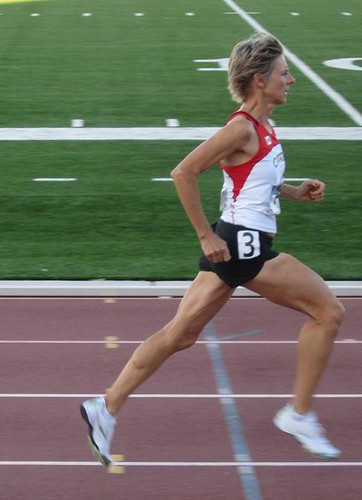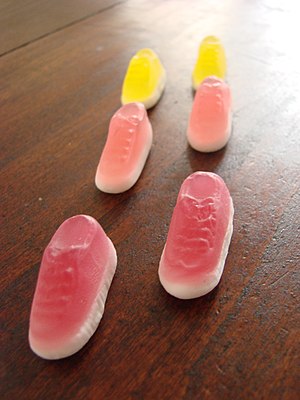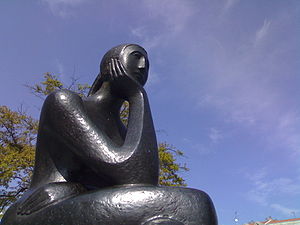 Today, I am presenting the first in a series of RunSmart videos. The series will be on-going and a new video will be released on a monthly basis. These videos will complement the material presented in the book “RunSmart: A Comprehensive Approach To Injury-Free Running”. The full series of videos can be found here.
Today, I am presenting the first in a series of RunSmart videos. The series will be on-going and a new video will be released on a monthly basis. These videos will complement the material presented in the book “RunSmart: A Comprehensive Approach To Injury-Free Running”. The full series of videos can be found here.
For those of you that are interested in a more interactive learning environment, consider attending a four hour RunSmart Level One program. You can further your education with the Level Two and Level Three programs which will focus on the application of RunSmart principles to both coaching and training program development and running injury recovery.
A transcription of the video will also be available with each post.
I hope you enjoy the video series. If you would like me to address any specific aspect of the RunSmart approach, drop me an email or add a comment to this article.
 It is the time of year for much rejoicing. College football started in Austin this past Labor Day weekend against the Rice Owls. Yes, these are the Owls that are known more for their marching band (the Marching Owl Band, or MOB) than they are for their stellar football program.
It is the time of year for much rejoicing. College football started in Austin this past Labor Day weekend against the Rice Owls. Yes, these are the Owls that are known more for their marching band (the Marching Owl Band, or MOB) than they are for their stellar football program.
With that said, there were a lot of unknowns for the University of Texas coming into this game. Most of the practices have been closed to the media and public. The Longhorns now have two new offensive coordinators (Bryan Harsin and Major Applewhite) and a new defensive coordinator (Manny Diaz). Gone are Greg Davis – he of the oppressively stagnant offensive game plans – and Will Muschamp – long departed for the Florida Gators. Either the coaches didn’t want to show the world all the good stuff they have in store for us this season, or they didn’t want to show us how bad this team is this year.
After last season, either option would be a possibility.
 We see the effect of our self image and comfort zone reflected in our behaviors on a daily basis. Our self talk becomes a significant factor in our self image. Should our self image be low, and our self talk be negative, we will also partake in self-sabotaging behaviors to maintain our comfort zone.
We see the effect of our self image and comfort zone reflected in our behaviors on a daily basis. Our self talk becomes a significant factor in our self image. Should our self image be low, and our self talk be negative, we will also partake in self-sabotaging behaviors to maintain our comfort zone.
We are all faced with a challenge to growth. How do we effectively acknowledge our self perceptions and self image and, in doing so, consciously raise the upper limit of our comfort zone? We have the ability – or the response-ability, as Stephen Covey notes - to expand our internal locus of control if we so choose. We have the ability to refine and control our self talk, again if we so choose.
Here are three common examples of self image, self sabotage, and comfort zones in action.
 The time has finally come. It’s September 1, 2011 – the day that Rhubarb goes video. Ruminations on video may be Rudimentary at first, but I am sure that they will eventually be … Remarkable? Robust? Radical? Just plain Revolutionary?
The time has finally come. It’s September 1, 2011 – the day that Rhubarb goes video. Ruminations on video may be Rudimentary at first, but I am sure that they will eventually be … Remarkable? Robust? Radical? Just plain Revolutionary?
First things first. I like to simplify my world. As much as possible at least. With that in mind, I am going to officially remove two syllables from my writing world. The Rhubarb Ruminations – in the spirit of simplicity – will now become the Rhubarb Report. I mean, how many people really have any idea what Ruminations really are? Sure, it sounds clever but let’s bring it back to basics. If a Report is good enough for Stephen Colbert, then I suspect it’s probably good enough for me. Just keep the hard “T” at the end. But it will always have that true Rhubarb flavor – you know, a little tart, with a hard “T”
So after 21 episodes of Rumination, let’s get this Report started.
 Somewhere in the midst of the 100+ degree temperatures in Central Texas, runners are finding inspiration to begin the journey that is marathon training. For many, it is time to start training for the Livestrong Austin Marathon in February 2012.
Somewhere in the midst of the 100+ degree temperatures in Central Texas, runners are finding inspiration to begin the journey that is marathon training. For many, it is time to start training for the Livestrong Austin Marathon in February 2012.
Many will decide to participate in the Austin Distance Challenge, a series of 5 races that lead up to the Austin Marathon.
Sadly, the start of marathon training in Austin also means that there will be an unfortunate rise in running injuries over the course of the next 6 months. Anywhere from 60 to 90% of runners will sustain an injury while training for a marathon – depending on which studies you read. 'Tis the season to be injured, fa-la-la-la-la … la-la-la-la.
The frustrating part is that many of these injuries could be prevented. Injury does not have to be the accepted reality of marathon training. Most injuries can be directly related to poorly developed training programs. Many Austin-area training programs are no different from the accepted norm and continue to emphasize aspects of run training that increase the risk of injury - regardless of the sports medicine and science evidence to the contrary.
 When you mention the name “Ayrton Senna”, you will probably elicit a broad range of responses. You may get a blank stare. Who is Ayrton Senna anyways? To some F1 fans, he was a villain. He was certainly involved in more than his share of end-of-season-championship-deciding accidents. To others, he was an F1 legend. And if you are from Brazil, he was a national hero on par with Pele.
When you mention the name “Ayrton Senna”, you will probably elicit a broad range of responses. You may get a blank stare. Who is Ayrton Senna anyways? To some F1 fans, he was a villain. He was certainly involved in more than his share of end-of-season-championship-deciding accidents. To others, he was an F1 legend. And if you are from Brazil, he was a national hero on par with Pele.
Athletes at the top of their sport tend to elicit these polarizing responses. In that regard, Senna was no different than a Michael Jordan or Roger Staubach, and his skill as one of the greatest racing drivers to grace the planet cannot be overlooked. This man was the real deal when he was behind the wheel.
He was also the real deal when he wasn’t behind the wheel. The film documentary “Senna” shows us all sides of the late Ayrton Senna – and does so with grace, beauty and passion.
 Systems thinking in health care forces the clinician to venture far from the shore in terms of their training and their beliefs. But in order to have a truly comprehensive system of health care, it will require clinicians to push the envelope of their thinking and let go of their belief systems. They will need to embrace assessment processes that allow the clinician to understand the behavior of the system as a whole, and a patient-centered treatment approach that emphasizes self care strategies.
Systems thinking in health care forces the clinician to venture far from the shore in terms of their training and their beliefs. But in order to have a truly comprehensive system of health care, it will require clinicians to push the envelope of their thinking and let go of their belief systems. They will need to embrace assessment processes that allow the clinician to understand the behavior of the system as a whole, and a patient-centered treatment approach that emphasizes self care strategies.
Mechanical Diagnosis And Therapy (MDT) is a true systems approach to disorders of the musculoskeletal system. It is the next great revolution in musculoskeletal care, yet it also currently creates discomfort amongst many clinicians. Why? It forces clinicians to let go of the patho-anatomical model of care they have held near and dear for decades.
 "Running Injuries: Etiology And Recovery- Based Treatment" (co-author Bridget Clark, PT) appears in the third edition and fourth editions of "Clinical Orthopaedic Rehabilitation: A Team Approach" by Charles Giangarra, MD and Robert C. Manske, PT.
"Running Injuries: Etiology And Recovery- Based Treatment" (co-author Bridget Clark, PT) appears in the third edition and fourth editions of "Clinical Orthopaedic Rehabilitation: A Team Approach" by Charles Giangarra, MD and Robert C. Manske, PT.
 Allan Besselink, PT, DPT, Ph.D., Dip.MDT has a unique voice in the world of sports, education, and health care. Read more about Allan here.
Allan Besselink, PT, DPT, Ph.D., Dip.MDT has a unique voice in the world of sports, education, and health care. Read more about Allan here.
 Top 5 finalist in three categories: "Best Overall Blog", "Best PT Blog" and "Best Advocacy Blog".
Top 5 finalist in three categories: "Best Overall Blog", "Best PT Blog" and "Best Advocacy Blog".